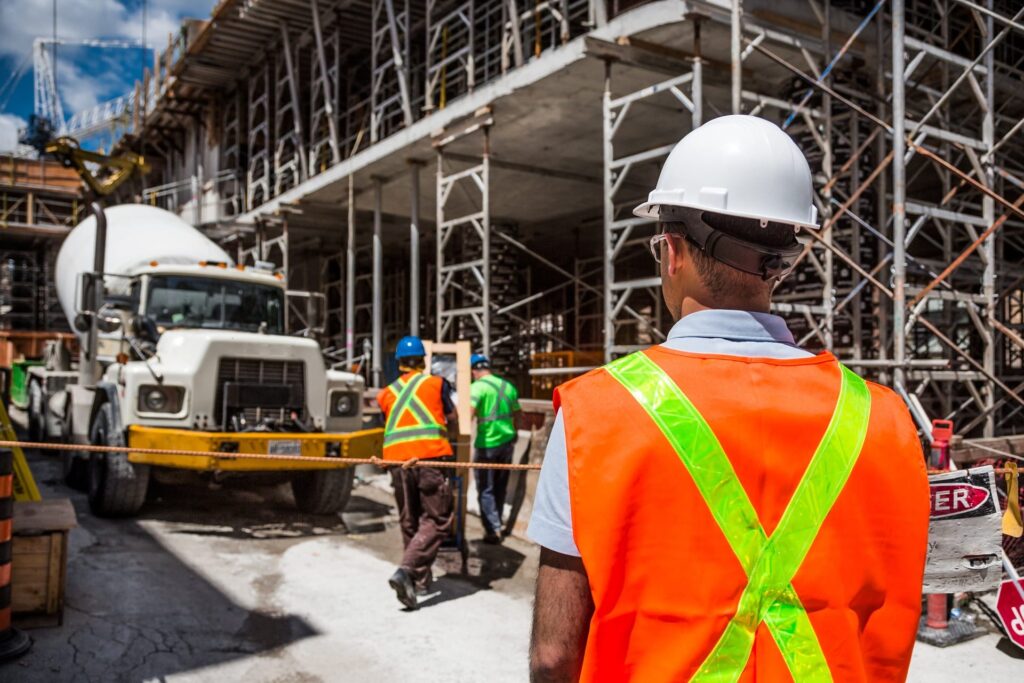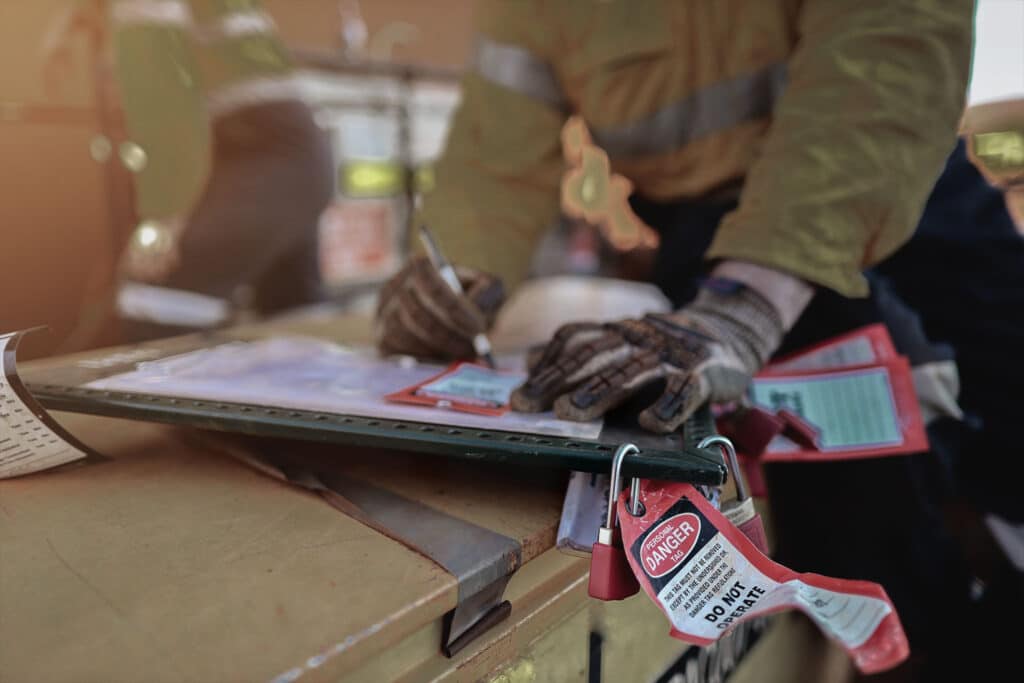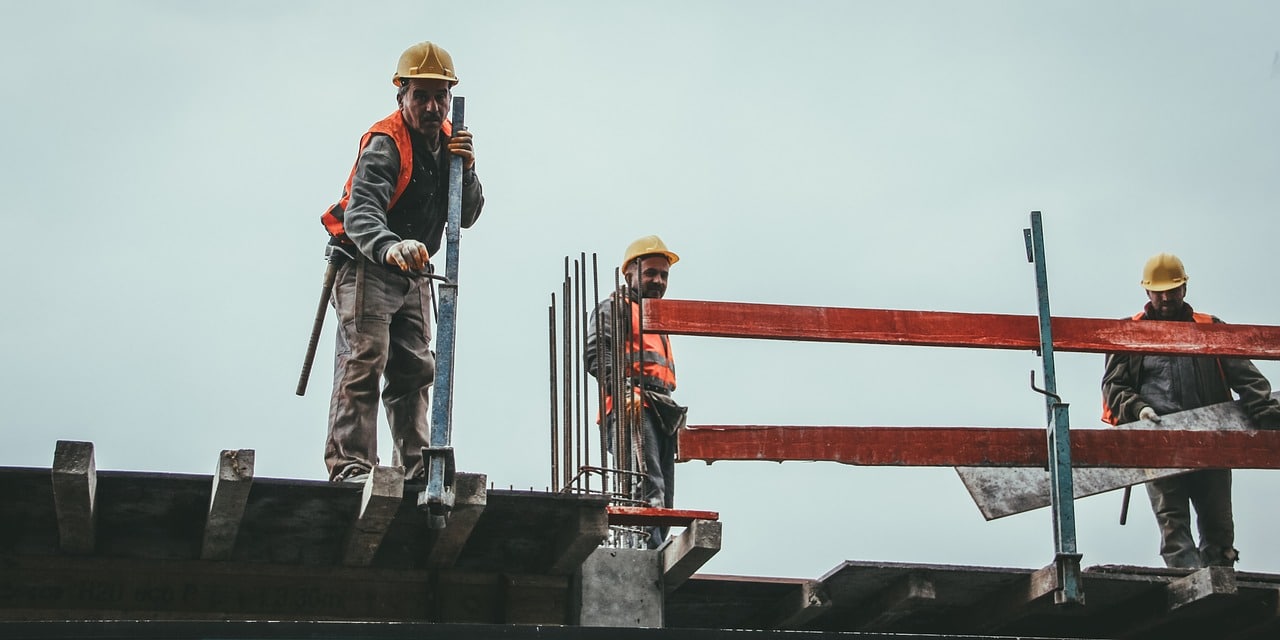There are many different ways workers can become injured on construction sites, from OSHA’s big 4 to hazardous substances and everything in between.
COSHH full form—control of substances hazardous to health—is a cornerstone of health and safety in the workplace. It provides a framework for identifying, assessing, and controlling the various risks associated with hazardous materials and substances that workers may encounter on construction sites.
We’ll discuss the intricacies of COSHH management, its fundamental aspects, identifying and controlling hazardous substances, and practical insights and strategies to keep your workers in compliance and safeguard their well-being when working on construction projects.
Free eBook: Guide to a digitised QHSE organisation
What is COSHH full form?
The control of substances hazardous to health is a regulatory framework that helps protect workers from exposure to dangerous substances on construction sites. In our industry, we handle various materials and substances that can be dangerous—that’s why understanding the COSHH principles is so important. These principles involve several key elements, including:
- Risk assessment: identifying and assessing potential risks associated with hazardous materials and substances used or created during the construction process.
- Control measures: implementing ways to control and minimise exposure, like engineering controls and PPE.
- Information and training: providing information and training to workers about hazardous substances they may encounter, for example, proper handling procedures and protective measures.
- Monitoring worker health: regularly monitoring exposure levels in workers to detect any adverse effects as early as possible.
Who is responsible for COSHH?
Ensuring COSHH compliance is the responsibility of almost everyone working on a construction project. These responsible persons include:
Senior management
It’s the responsibility of senior management to set the overall health and safety policies for construction companies and the sites they oversee, including adherence to COSHH regulations. They should also demonstrate leadership to foster a culture of safety and compliance and allocate resources to implement and maintain COSHH controls.
Health and safety managers
These individuals develop and oversee the implementation of COSHH policies. In addition, they regularly conduct risk assessments, establish control measures, and provide training to others on COSHH requirements.
Site managers and supervisors
On-site leadership is responsible for implementing specific control measures on each construction site, monitoring and enforcing compliance during operations, and communicating information to workers, contractors, and subcontractors.
Employees
Those working on the construction site are also responsible for COSHH. Employees and workers must use the provided control measures, follow COSHH guidelines, attend training sessions, and report any concerns or incidents immediately.
Health and safety reps
While not every construction company uses them, health and safety reps are a liaison between employees and management. They participate in safety meetings and inspections and contribute to the development of COSHH procedures.
Human resources
A construction company’s HR department is responsible for facilitating the integration of COSHH training and assisting in communicating COSHH policies and procedures to other employees.
Consultants
Finally, it’s not uncommon for construction companies to hire external consultants to provide expertise in COSHH compliance and conduct audits and assessments to ensure everyone adheres to regulations.
More to read: Five benefits of inspection reporting software

What substances does COSHH cover?
COSHH covers a wide range of substances that can pose potential health risks to everyone on a construction site. Some of the common substances covered by COSHH include:
- Chemicals like solvents, paints, adhesives, and cleaning agents
- Dusts generated from cutting, drilling, and sanding
- Fumes created during welding, soldering, or other processes where materials are heated
- Gases including refrigerants and welding gases
- Biological agents like bacteria, fungi, or viruses that may be present on site
- Vapours emitted from solvents, fuels, or other construction materials
- Nanomaterials with unique properties that can cause potential health risks
- Asbestos found in construction materials, especially in older buildings
- Heavy metals and lead that may be present in paints, solder, or other materials
Here’s how you can manage COSHH for your construction project
How you manage COSHH is a crucial part of construction site management. There are 5 main elements for effectively managing COSHH, all of which come together to create a safer working environment.
We’ll explore these 5 points and delve into how you can better manage COSHH on all of your construction sites, ensure compliance, and implement controls to mitigate the risks of exposure.
1. Identify all hazards
You can ensure COSHH compliance by identifying all on-site hazards. This includes:
- Conducting thorough site surveys to identify every potential source of hazardous substances, for example, examining materials, processes, and equipment used in construction activities.
- Providing access to updated safety data sheets (SDS), formerly called material safety data sheets (MSDS), to all workers. These safety data sheets provide information on the properties and potential hazards of each substance.
- Engaging workers and encouraging the reporting of new or unforeseen hazards. You can also tap into the knowledge and experience of workers involved in different activities.
- Consulting and communicating with suppliers to gather information about the potential hazards of products they provide. You should obtain documentation that states how to handle, store, and dispose of those substances.
- Using technology and implementing tools, like construction management software, to record and track hazardous substances. This helps you maintain a centralised database, ensuring easy access to information for everyone involved in the project.
2. Conduct COSHH risk assessments
Another important part of managing COSHH on your construction sites is conducting regular risk assessments. You can do this by:
- Tracking inventory of hazardous substances present on the construction site, including detailed information about quantities, locations, and potential exposure routes.
- Conducting exposure assessments to evaluate the dangers of a substance. For example, assess the likelihood and severity of harm, the nature of the substance, the duration of exposure, and the control measures you have in place.
- Identifying vulnerable groups, like young workers, pregnant workers, and individuals with pre-existing health conditions. You want to tailor your risk assessments to account for a diverse workforce.
- Assessing your control measures to evaluate their effectiveness in minimising exposure. This includes the use of PPE, engineering controls, and administrative controls.
- Documenting and reviewing the results of risk assessments to update COSHH guidelines and ensure compliance.
3. Control all hazards
Providing and requiring PPE should be the last resort for controlling hazardous substances. The best ways to control on-site hazards include:
- Understanding and prioritising the hierarchy of controls. First, attempt to eliminate the hazardous substances when possible. Then, implement engineering controls, establish administrative controls, and finally, provide PPE if you cannot control the hazards in any other way.
- Implementing engineering controls to help eliminate or minimise exposure. These controls include exhaust ventilation, the enclosure of processes, or even automated systems to reduce the time spent manually handling hazardous substances.
- Developing safe work practices to minimise the release of hazardous substances, like establishing protocols for handling, storage, clean up, and disposal of all substances.
- Providing training to educate workers about the hazards of different substances they may encounter and ensuring effective communication of control measures and emergency procedures.
- Monitoring and maintaining control measures to ensure their effectiveness. You should regularly perform maintenance on equipment and systems to prevent situations that could lead to increased exposure.
4. Educate your employees on COSHH
One of the best ways to ensure COSHH compliance and keep your employees safe is by educating them about the dangers and handling of hazardous substances. You should provide:
- General training programs that cover COSHH basics, including identifying hazardous substances, their risks, and safe handling practices.
- Task-specific training for specific job roles and sites. Different construction activities come with unique hazards, so employees must receive specific education about the substances they may encounter in their work.
- Visual aids to enhance understanding and compliance. Clearly communicate the locations of hazardous substances, related emergency procedures, and PPE requirements throughout the site with posters, labels, diagrams, etc.
- Regular refresher courses to reinforce knowledge and keep employees updated on any changes in substances used on site, procedures, or regulations. This ensures that everyone is aware of current COSHH guidelines.
- Gather feedback and questions to encourage an open communication environment with your employees. When they feel comfortable talking about COSHH concerns, it helps create a culture of shared responsibility and continuous improvement.
5. Constantly monitor hazardous materials
The dangers of hazardous substances and materials change from site to site and task to task. COSHH requires constant monitoring in the form of:
- Real-time monitoring systems for any substance with acute health risks. Implementing this technology allows workers to detect elevated levels immediately, enabling quick response to mitigate exposure.
- Routine inspections of work zones, equipment, and storage areas to ensure the proper containment and handling of any hazardous materials so that any issues can be addressed immediately.
- Air quality monitoring to assess the concentration of any airborne contaminants. Regularly checking and calibrating these devices will help keep everyone safe on your construction sites.
- Biological monitoring, like blood and urine tests, can help assess the internal exposure levels of workers who handle specific hazardous substances. This provides insights into the effectiveness of your control measures.
- Incident reporting and investigating systems for any spills, leaks, or other releases of hazardous materials. These incidents must be investigated immediately to implement corrective actions and determine their root causes.
Monitor and implement better COSHH full form controls with LetsBuild
At LetsBuild, we take safety seriously. Our digital solutions help contractors and construction companies worldwide prioritise the well-being and safety of workers on construction sites, no matter the type of project.
Communicate and report in real time on the same digital platform, automate your COSHH controls and processes, and conduct mobile site inspections from anywhere with the construction management software built for builders.
Book your personalised demo of LetsBuild today, and see how we can help you create, manage, and maintain a safe workplace for all of your employees.




